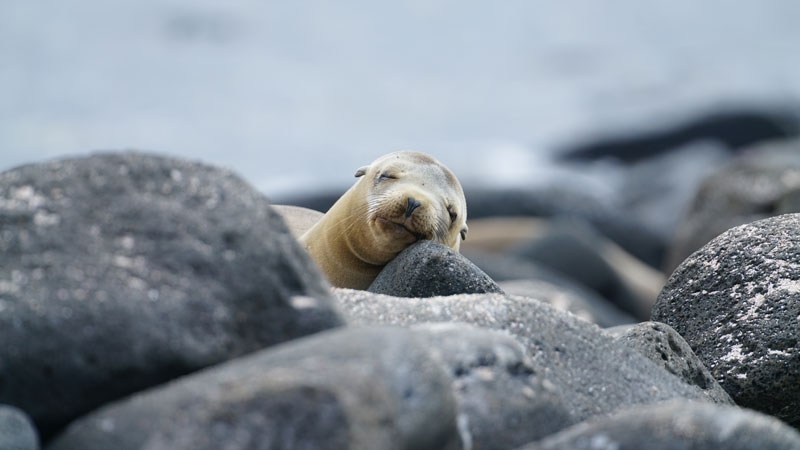The Galapagos Islands: A wildlife wonderland
They dart from left to right, before somersaulting and tumbling down towards the seabed. I barely get the opportunity to blink before they zip straight back up to the surface of the warm waters that serve as their playground.
I’m snorkelling at Isla Champion, a small islet off the shores of Floreana, an island in the southern part of the Galápagos, where we’ve stumbled upon at least a dozen sea lion pups frolicking in the water.
They twist and turn, leaving a wake of bubbles behind them. Meanwhile, the larger members of the group lollop on the rocks above, basking in the midday sunshine. A dominant bull barks orders, seemingly at random, making it clear to the other sea lions – and us – who’s boss.
It’s not long before the playful, inquisitive and fearless pups – completely at ease with our presence – take an interest in the small number of mesmerised humans who float before them with far less grace and elegance. The wide-eyed pups begin to swim towards us, narrowly avoiding a collision as they whip past at full throttle. My heart races with adrenaline. On one occasion I almost come nose-to-nose with the tiniest pup, who approaches me repeatedly. I frantically attempt to move out of his way, keen to abide by the rules of the Galápagos that ensure the flora and fauna of these protected islands remain pristine and undisturbed.
The underwater gardens around the islands teem with marine life: bright lobsters; starfish of all varieties including chocolate chip and blue sea stars; and schools of flamboyant king angel fish and yellowtail sturgeons. The bewitching marine habitat turned this indifferent swimmer into a water baby, raring to don wetsuit and snorkel at any opportunity.
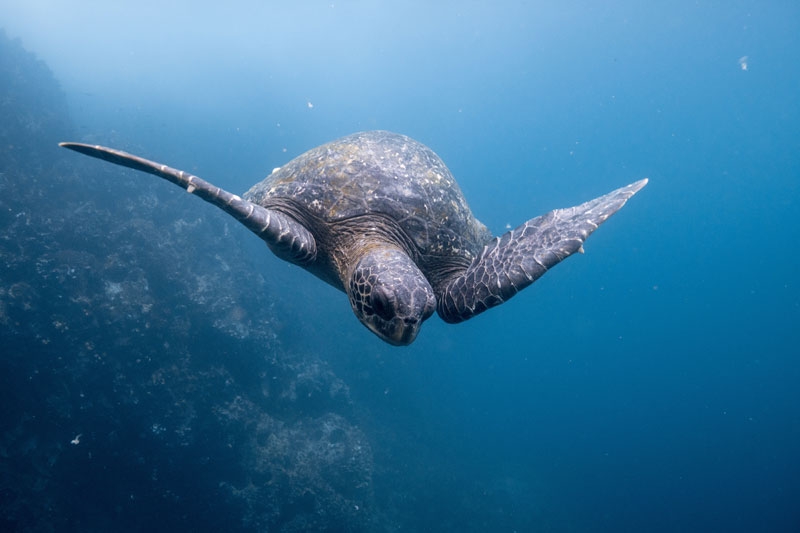

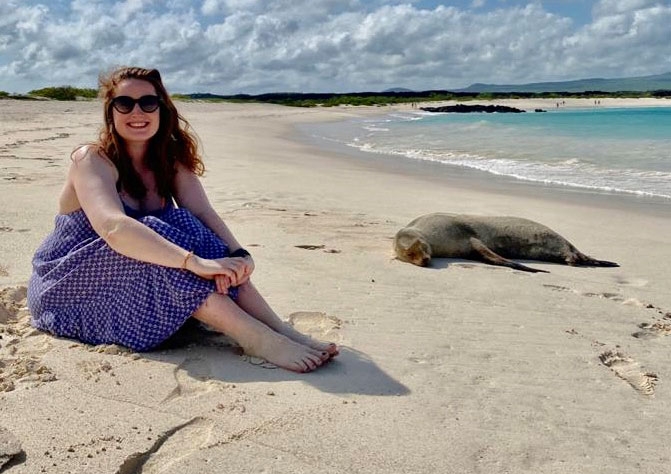
Yacht life
I’m travelling on board luxury yacht Theory, one of the high-end vessels from Galápagos specialist EcoVentura, sailing from San Cristóbal to some of the older islands of the archipelago – Española, Floreana, Santa Cruz, Bartolomé, South Plazas and North Seymour.
The 10-suite megayacht is more akin to a boutique hotel then a ship, with sleek design features, a hot tub, concierge, library and gym. All cabins are designed the same, with huge windows, perfect for dolphin and shark spotting when you wake each morning, and rainforest showers with similar views. Being part of the Relais & Châteaux collection means the cuisine is exquisite, with refined fare served either in the dining room or on the sun deck. Meals are at set times, with all guests dining as a group, providing the perfect opportunity to share highlights from each day.
With a maximum of just 20 passengers on each sailing – many are booked as exclusive charters – this is the way to experience this unspoilt paradise, with no crowds and a crew-to-passenger ratio that is unrivalled in the region. You’ll rarely see another yacht or cruise ship, let alone another group of travellers, with the Galápagos National Park allocating strict itineraries to each company that applies for a licence to sail here. Two naturalists join each sailing – in my case, the dream team of Cecibel Guerrero and Billy Maquilón – educating guests in two groups of 10 with at least two daily activities planned, plus countless snorkelling and kayaking opportunities.



Sea lions, turtles, penguins
Sea lion encounters come in abundance. We navigate around them as they block the jetty at San Cristóbal as we attempt to board Theory for the first time; they snuggle side by side on the shores of most of the islands we visit; and we share countless more snorkelling experiences with them. In fact, sea lions are just the launch pad for the bounty of underwater wildlife we have the privilege of witnessing on our extraordinary adventure.
Another highlight comes as I swim with half a dozen majestic turtles on the shores of Las Bachas beach on Santa Cruz, watching them feast on algae. They melodically flow backwards and forwards with the tide, captivating me and my fellow awestruck snorkellers. We each raise our heads out of the water from time to time in sheer excitement, with beaming smiles and a squeal of delight.
On Bartolomé, it’s the Galápagos penguins that capture my heart, as I snorkel with the second smallest breed of penguin. At North Seymour, we’re enchanted by beautiful spotted eagle rays and hammerhead sharks, a highlight for many after days of whitetip reef shark sightings.

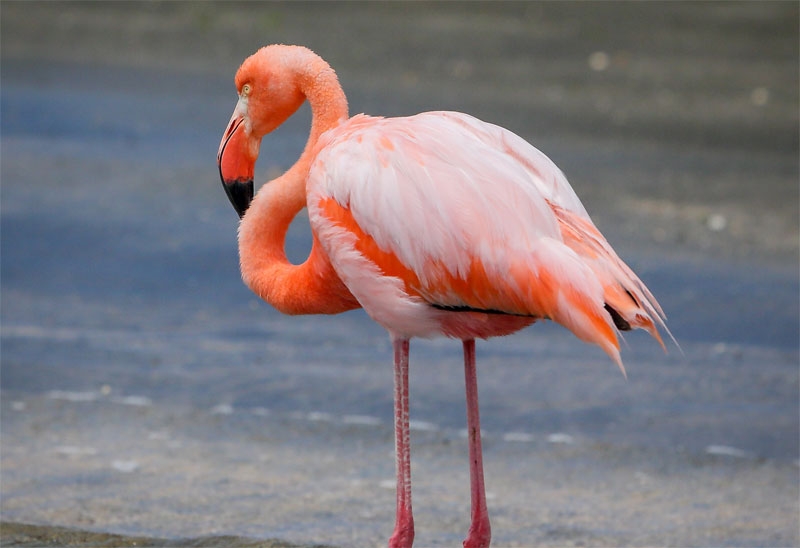
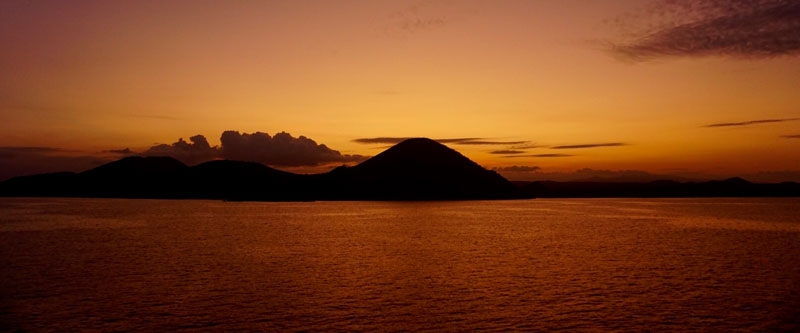
Beauty and diversity
The Galápagos Islands are just as beguiling above water. Conditions on the 19 islands – located 600 miles off the west coast of South America – are among the harshest on Earth. The challenging terrain and climate mean only the hardiest creatures survive, having evolved traits to suit their environment. And each island presents a different set of challenges.
But there’s beauty in abundance. On San Cristóbal we frolic on white-sand beaches and run in and out of bath-warm waters as blue as a twinkling gemstone. On the oldest and most southerly island, Española, we walk through a rocky flat terrain, covered in iguanas camouflaged against the blackened, volcanic backdrop, towards a giant blowhole which spurts water high into the air. We watch sea lions surf the waves nearby and spot the famed blue-footed boobies, proudly parading their Tiffany-turquoise feet for all to see.
Flora has flourished on the verdant and mountainous Floreana island, which is also home to flamboyant flamingos and countless stingrays clinging to the shoreline. The humidity is intense, with a jungle-like atmosphere. Here too you’ll find the first ‘post office’ of the Galápagos, established by whalers in 1793. To this day, visitors can leave a postcard to be picked up by subsequent travellers who take on the responsibility of delivering it if they are heading the same way (mine arrived just two weeks after I landed back in London).
The majority of locals live on Santa Cruz, as do hundreds of giant tortoises – the animal probably most commonly associated with these special islands. They can often be found munching on greenery, mating or lazing in muddy pools.
We hike up Bartolomé’s Mars-like, volcanic terrain in the afternoon heat to a peak which delivers stunning aerial views; and we watch prehistoric-looking yellow land iguanas feast on cacti on South Plazas. On North Seymour, we see male frigate birds flaunt their bright red throat pouches as they attempt to attract females during mating season.
Throughout our week’s sailing between these extraordinarily varied islands, we learn how Charles Darwin’s visit here in 1835 laid the groundwork for his theory of evolution, with our guides Billy and Cecibel highlighting the subtle differences that have created sub-species over the years.
Coming face-to-face with so many endemic species and traversing this unique island paradise left a marked impression on me. The Galápagos is a true playground for adventure, and there’s no doubt that I experienced it in the best fashion possible.
Book it: Abercrombie & Kent offers a 12-night Classic Ecuador and the Galápagos trip, including a week-long sailing with EcoVentura, from £10,590 per person.

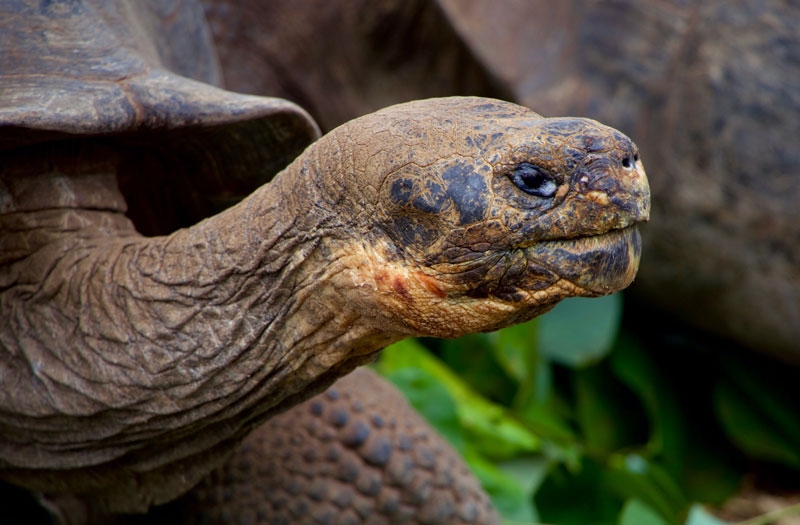

Getting there
It’s a mammoth journey, but it’s worth it! Clients will have to stop over in another Latin American country before continuing on to Ecuador. My route was with Avianca, stopping in Bogota, Colombia, before my second leg to Quito. Many travellers opt to spend a couple of days in Quito before flying on to the Galápagos via Guayaquil.
When to visit
The Galápagos is a year-round destination and there’s no wrong time to visit; the different times of the year simply mean having different things to see and do. The islands’ close proximity to the equator means the temperature change is minimal. Find out what your clients’ priorities are so you can suggest the best time of year for them. If they’re keen to see frigate birds in mating season, recommend March or April; June through to November is a good time for seeing whale sharks off Darwin and Wolf islands; while August is prime time for the birth of sea lion pups.
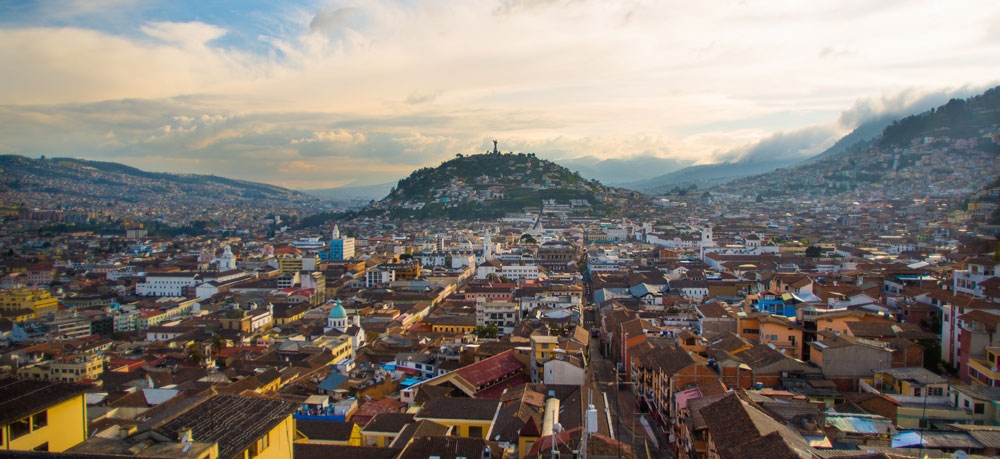
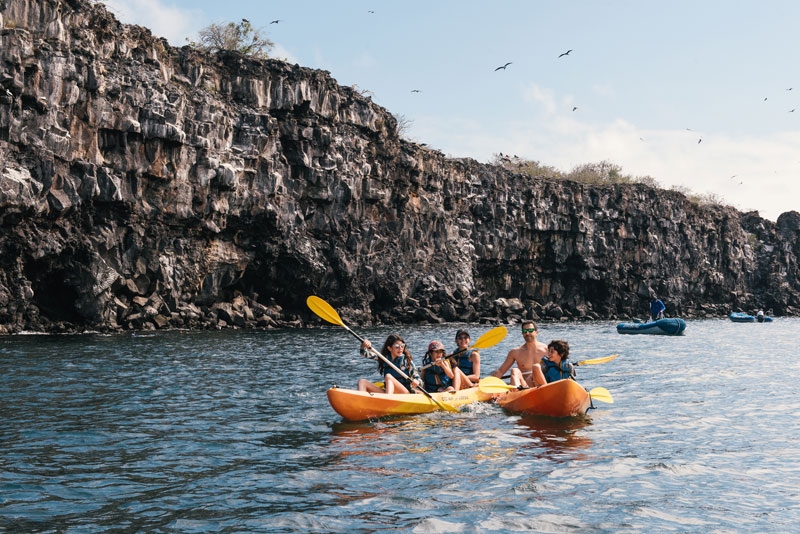

Exploring Quito
Located high in the Andes and encased by the rugged peaks of active volcanoes, the Ecuadorian city boasts a dramatic landscape. This charming capital, the second-highest in the world, lays claim to being the best-preserved colonial city in Latin America and was the first entire city to be declared a World Heritage Site by Unesco. For tourists heading on to the Galápagos, this historic gem serves as an ideal stopover, well worth a stay for a couple of nights.
The historic centre (pictured) – the area surrounding Plaza de la Independencia – is a treasure trove of cultural delights, teeming with churches, museums and colonial architecture. It’s a hive of activity and the lifeblood of Quito, bustling with locals selling their wares at a bounty of market stalls. You’ll also find countless chocolate shops, and a tasting is a must!
The culinary scene here is flourishing, with a burgeoning number of high-quality restaurants. Terra offers molecular cocktails and super-refined cuisine. For something more local, head to La Ronda, a street full of bars, restaurants and nightclubs.
Those with time for further exploration should head an hour out of the city to the equator line, home to an interesting museum and the Middle of the World monument. The museum is fun, especially for children, and well worth the journey.
Book it: Quito features on Abercrombie & Kent’s 16-night Epic Ecuador itinerary, from £11,540 per person.
